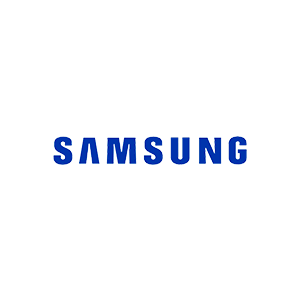If you buy something using links in our stories, we may earn a commission. This helps support our journalism. Learn more. Please also consider subscribing to WIRED
Tired of looking like a pixelated blob on your Zoom calls? Why use that pesky, tiny, low-quality webcam embedded in your laptop when you have a seriously great smartphone camera in your pocket? It has become really easy to use your smartphone as a webcam these days, and some options don’t even require you to plug anything in. We’ve detailed how to do this whether you have an iPhone or Android, on Windows or Mac.
We also have instructions for using a professional camera or GoPro to handle the same task. If you don’t want to fuss with apps, check out our Best Webcams guide.
Updated June 2024: We've vetted every pick again, removed older methods, and added steps for Pixel and Motorola phones.
- No PC Required: How to Video Call With Just Your Phone
- Mac and Windows: How to Use Any Phone as a Webcam (Wireless)
- Mac Only: How to Use iPhone as a Webcam With Continuity Camera (Wireless)
- Mac and Windows: How to Use a Google Pixel Phone as a Webcam
- Windows Only: How to Use a Motorola Phone as a Webcam on Windows (Wireless)
- Windows Only: An Alternate Wireless Method for Windows (iPhone and Android)
How to Make a Video Call With Just Your Phone
Before converting your smartphone into a webcam for your computer, the obvious thing might be to try using your smartphone to run a video meeting. Services like Zoom, Google Meet, and Microsoft Teams generally have Android and iPhone apps available. All you need to do is install the app, log in, and use your phone’s selfie camera and microphone to participate in the meeting.
Whether you do this or follow our methods below, invest in a small tripod to prop your phone up so you don’t have to balance it against a pile of books. The Joby GripTight is a popular and affordable tripod with legs that can contort to stay stable on almost any surface, though a height-adjustable tripod like this might be a better option. Lume Cube’s Panel Mini is also a nice way to illuminate your face.
Ways to Use Your Phone as a Webcam
You can use a videoconferencing app on your phone if you quickly need to sit in on a meeting and chime in now and then, but you’ll need a better system if you’re presenting and have to share your screen. That’s where it could help to convert your smartphone into a webcam.
General tip: Make sure your preferred videoconferencing app is closed when installing a webcam client on your desktop PC or laptop. You may need to relaunch the app or restart your computer to get it all working.
The solution that works—whether you have an iPhone, Android, Mac, or Windows, in any combination—is a service called Reincubate Camo. It’s compatible with more than 40 video-calling apps, from Google Meet and Zoom to FaceTime and Discord. The steps below will work if you’re trying to connect an Android to a Mac, an iPhone to a Windows PC, or vice versa.
- Download the Camo app on your Mac or Windows machine. Then download the app on iOS or Android. Android phones need to be running version 7.0 and up, and iPhones need to be on iOS 12 or later. It’ll work with Windows 7 (64-bit) or newer, and macOS 10.13 or later. (Camo also works with iPads.)
- Launch the app on your PC and smartphone. Camo supports wireless video transfer, so all you need to do is press the Wi-Fi icon in the Camo app on your phone (after permitting it to use your microphone and camera), and a QR code scanner should pop up. In the desktop client, click the drop-down menu under Device and choose Pair a Device. You should see a QR code. Scan it and your phone should connect immediately. Skip to step four if this is working.
- If you don't want to go the wireless route, plug in a cable from your phone to your computer—make sure it’s a data-supported cable (not all USB-C cables support data transfer). (If you have issues, try another cable.) For Android phones connecting to a Windows PC, you’ll need to enable USB debugging mode. To do this, head to Settings > About Phone and then tap Build Number seven times to enable Developer mode. Once turned on, you can find it in Settings > System > Developer Mode, though some of the navigation menus may differ based on your Android phone. Scroll down to find USB Debugging and toggle it on. You might see a pop-up asking whether you want to allow USB debugging. If it's not working, unplug the cable and plug it back in. Connecting an Android to a Mac? Turn USB debugging off. If you never turned it on, you should be good to go, or head to Developer mode again and turn it off. iPhones connecting to Windows PCs or Macs shouldn’t require additional steps (press Trust if the pop-up appears on your phone).
- You should now start seeing your rear camera’s feed on the Camo desktop app. If you don’t, and you're connected via a cord, unplug the cable from your phone, then restart the Camo app on your computer and phone. Plug it back in and you should see the feed.
- Go to your video conferencing app’s device settings and choose Camo as the video camera, and your phone camera’s feed should pop up. You can also change the default microphone to Camo if you want to use your phone as a mic.
You get quite a few options to choose from in the Camo desktop app to customize the video feed. That includes 720p video quality and zoom options, and you can remove the watermark. Much of this is free, but unfortunately, you'll need to pay for Camo Pro for several nifty features, like 4K recording, the ability to switch lenses, and Portrait mode (iPhone owners are likely better off using Apple's Continuity Camera, which we detail further below). Camo offers a few payment options: a lifetime license ($100), an annual subscription ($50), or a monthly subscription ($9).
Apple's Continuity Camera lets you use your iPhone as a webcam for your Mac—no third-party software required. Your iPhone needs to be on iOS 16 or later, and your Mac needs to be on macOS 13 Ventura or later. (iOS 16 isn’t available for the iPhone 7 or older, so you’ll need to upgrade your device.)
When you open a video-calling app with your iPhone nearby, you’ll see a pop-up explaining that you can use your iPhone as a webcam. The first time I tried to switch the camera it didn’t work, but a restart of my phone and MacBook did the trick.
- Make sure Wi-Fi and Bluetooth are turned on for your Mac and iPhone. Your devices need to be logged in to the same iCloud account.
- On your iPhone, go to Settings > General > AirPlay & Handoff and make sure Handoff and Continuity Camera are turned on.
- Your iPhone needs to be nearby. In your video-calling app’s device settings, choose your iPhone as the camera source. You’ll hear a chime when your iPhone is connected.
- It works wirelessly, but you can plug it in to prevent battery drain.
- If you try to do anything else on your iPhone, the camera feed will pause. You can press Pause if you want to continue using your phone so you don't have to reconnect it again.
In most video-conferencing apps, like Zoom, you can toggle on HD mode to improve the video quality. When you tap the Control Center in the taskbar, you'll see a Video Effects button. Tap it and you'll get options to turn on Center Stage, which will pan the camera to make sure you’re always in the frame; Portrait, which will blur the background; and Studio Light, which will glam you up with some studio-like lighting. The same goes for Desk View mode, which will use the ultrawide camera on the iPhone to show what’s on your desk (er, crumbs, really).
Belkin has a mount for MacBooks ($30) and Macs ($40) that sticks to the back of your iPhone using the MagSafe magnetic connection. This lets you place the iPhone on top of your computer so you don't need to hold it or use a tripod. It works well, but for MacBooks, make sure the screen is almost at a 90-degree angle to prevent the phone from falling off. This is the best way to use your iPhone as a webcam with a MacBook.
It's also worth noting that if you have an Apple TV 4K (second-gen or newer), you can use your iPhone as a webcam for FaceTime calls. Just make sure your TV's operating system, tvOS, is running the latest version. Anyone on the same Wi-Fi network running iOS 17 or iPadOS 17 and newer will be able to use their iPhone or iPad as a FaceTime camera.
Google has added support for using a Pixel phone as a webcam; however, you'll need a Pixel 6 or newer (make sure it's updated to the latest version). Your PC will need to support the USB Video Class (UVC) specification, though this extends to tablets, TVs, and even cars. Unfortunately, this means you have to use a USB cable; it doesn't work wirelessly.
- Connect your Pixel to your PC via a USB-C data-supported cable.
- You should see a notification on the phone that says, “Charging this device via USB.” Tap on it for more options, and then scroll down to Webcam.
- On your PC's video-calling app, you should see Android Device as a video option; select it.
- That's it! On your Pixel, you should see another notification indicating your phone is being used as a webcam. Click on it, and you'll see options to flip to the selfie camera, switch lenses, and even increase the quality (though there's a warning that your phone will get hotter).
Got a Motorola phone? Select devices support Motorola's Moto Connect platform (formerly called Ready For). You can connect your phone to a PC through it, though the webcam function is but one of many other features it offers. You can see a list of compatible Motorola devices here. The caveat? This does not work on Apple's macOS. You need Windows 10 or Windows 11.
- On your Windows desktop, open the Microsoft Store app and find the Smart Connect app by Lenovo (Lenovo owns Motorola). Install it.
- Once you get to the main dashboard of the Smart Connect app (you don't have to create an account), you'll see a QR code. Open the camera app on your supported Motorola phone and scan it. It should automatically pair with your PC.
- Click on the Webcam tile in the Smart Connect app. It'll ask you to first install the webcam driver. After it's installed, press the Webcam tile again and you'll see a connection request on your phone.
- You should now see a camera feed, with options to track a subject, switch lenses, add a background blur effect, and even turn the flashlight on (Studio Light).
- Go to your video-calling app and choose Smart Connect as the video source, and you're good to go. Your Motorola phone can now be used as a webcam.
When launching your video-conferencing app again, as long as Smart Connect is your camera source and your Motorola phone is nearby, it should automatically use your phone as a webcam without needing to fuss with anything. It's worth noting that if your TV supports Miracast, you can use your Motorola as a wireless webcam—you can start this directly from the phone.
If you’re on a PC running Windows and you use an Android phone or iPhone, one of the easiest (wireless) methods is to use a free app called DroidCam. It also works with Linux, but there is no MacOS support. You can also connect via a cable if you’d rather not drain your phone’s battery.
Steps to set up DroidCam:
- Download the app from the Google Play Store or Apple App Store on your phone. (Your Android phone needs to be running Android 5.0 or higher. iPhones need to be on iOS 9 or later.)
- Download the Windows client on your computer. Follow the setup wizard’s installation instructions.
- You should see the DroidCamApp icon on your desktop. Double-click it to open it. Open the app on your phone and permit it to access your camera and microphone. Make sure your desktop and phone are connected to the same Wi-Fi network. (It also works if your desktop is connected via Ethernet.)
- On the phone app, you will see some numbers after Wi-Fi IP and DroidCam Port. Enter these values into the corresponding fields on the PC software that says Device IP and DroidCam Port. It’s confusing, but the Wi-Fi IP on the mobile app needs to be the numbers you type into Device IP on the desktop app. Make sure both Video and Audio are checked off. Hit Start. The phone app will launch the camera, and you’ll be able to see the feed on the PC client.
To get it to work with your videoconferencing software, you’ll always need to launch the DroidCam PC client and app first (steps 3 and 4 above). Then, go to your videoconferencing app’s settings and change the camera and microphone input to DroidCam and DroidCam Virtual Audio. It should immediately start using your phone’s hardware.
DroidCam is free, but it hides a few features—like better video quality, contrast, sharpness tools, and more—in its DroidCamX paid app on Android, which also gets rid of ads in the app. You can unlock similar features by using the Upgrade feature in the iPhone app’s settings. Try the free version first, but it might be worth the $5 if you use it a lot.
Note: On Windows, DroidCam doesn’t work with apps downloaded from the Microsoft Store. For example, with Skype, make sure you download the desktop client instead of installing the app from the store.
Power up with unlimited access to WIRED. Get best-in-class reporting that's too important to ignore for just $2.50 $1 per month for 1 year. Includes unlimited digital access and exclusive subscriber-only content. Subscribe Today.










